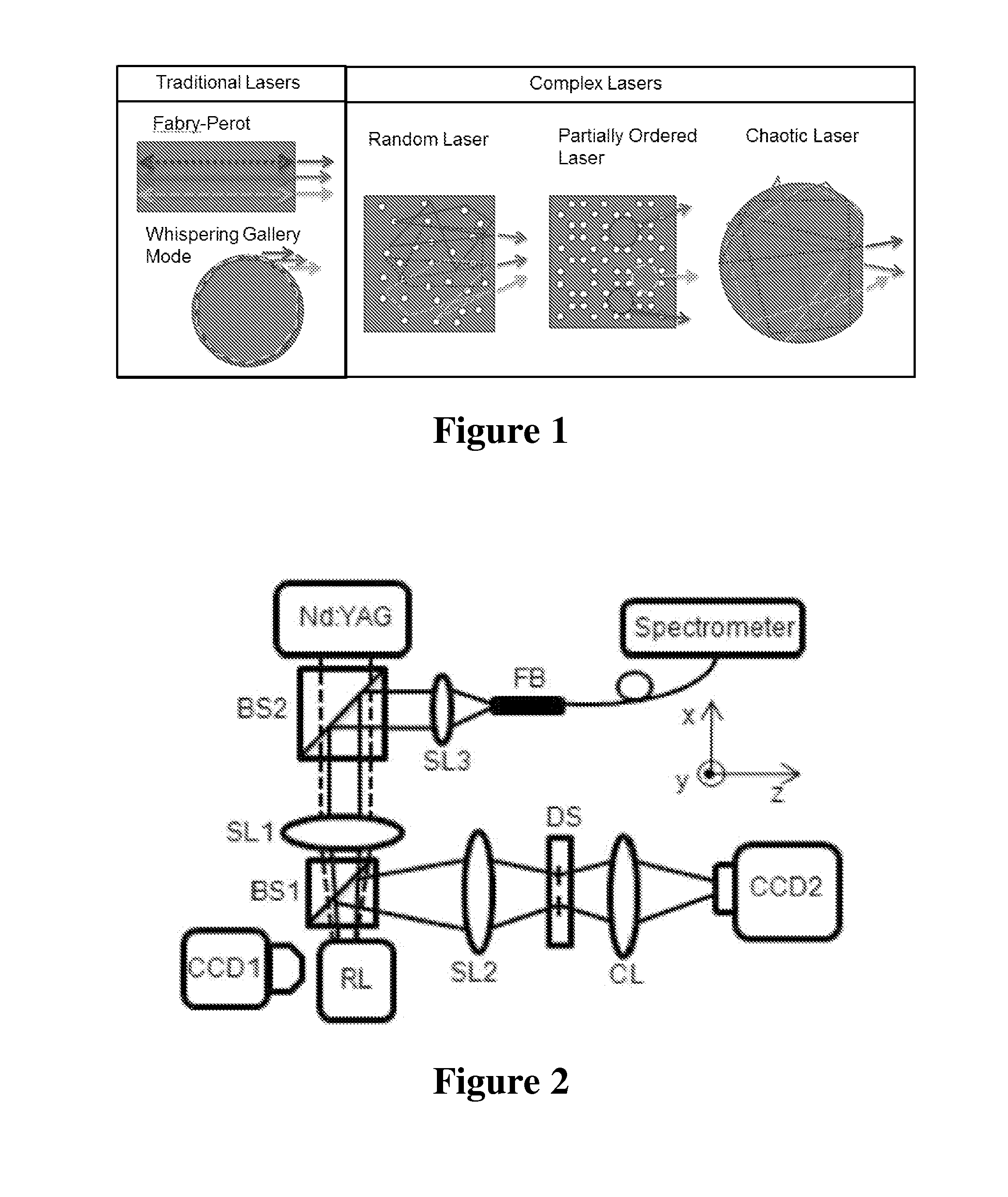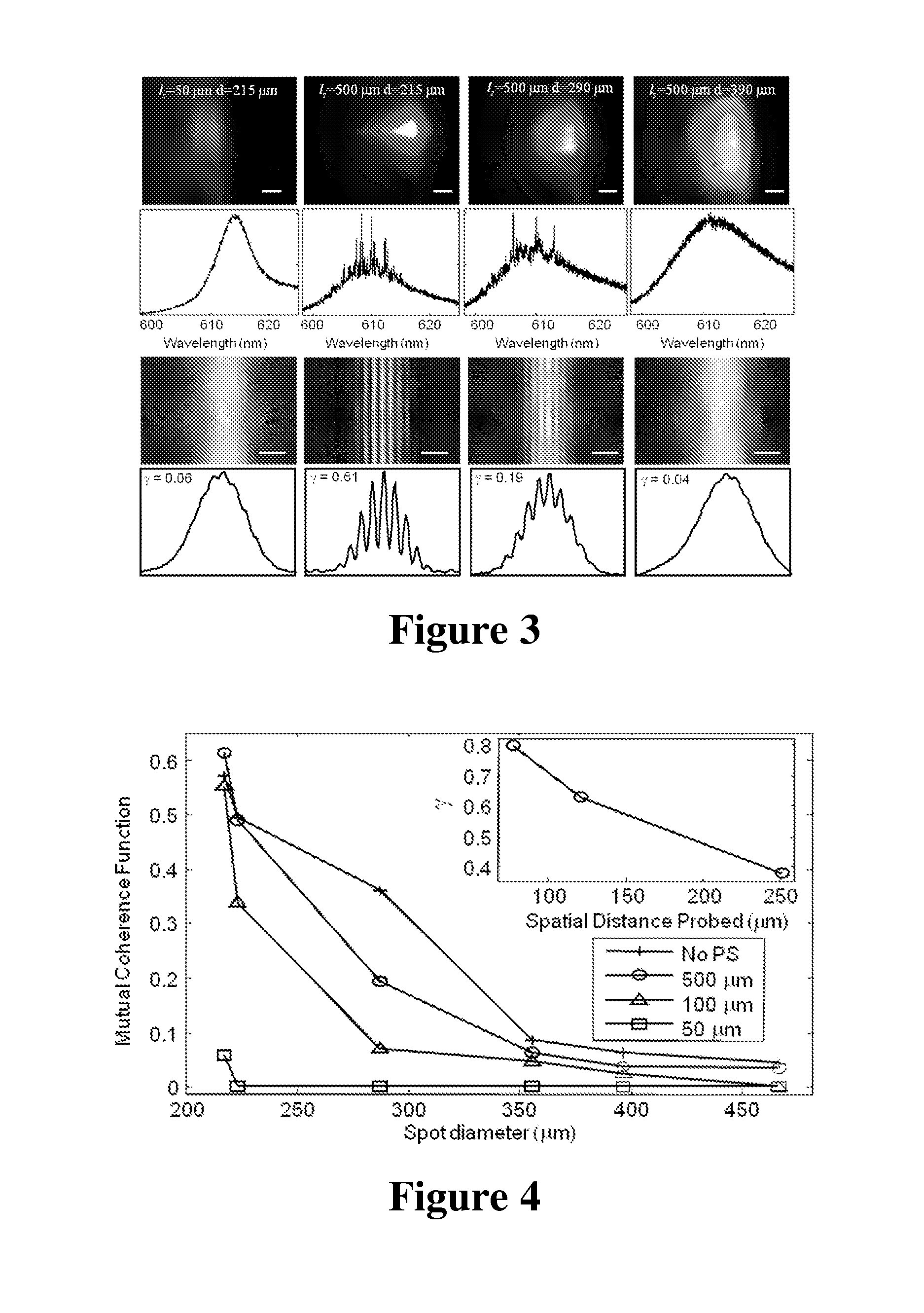Systems and Methods for Imaging Using a Random Laser
a random laser and imaging technology, applied in the field of imaging, can solve the problems of spatial coherence leading to coherent imaging artifacts, poor suited lasers and slds for full-field imaging applications, and corrupting images, so as to achieve lower coherence illumination, reduce coherence, and reduce coherence. effect of illumination
- Summary
- Abstract
- Description
- Claims
- Application Information
AI Technical Summary
Benefits of technology
Problems solved by technology
Method used
Image
Examples
Embodiment Construction
)
[0030]According to the present disclosure, advantageous systems and methods are provided for imaging using complex lasers. In general, a complex laser may by used as an electromagnetic source for an imaging application (e.g., visible light, ultraviolet radiation, near infrared radiation, infrared radiation, microwaves, x-rays, etc.). The use of a lower spatial coherence configured complex laser in imaging applications may advantageously mitigate coherent artifacts in imaging such as cross-talk and speckle and improve overall image quality. Exemplary imaging applications where a complex laser may be useful include both incoherent imaging applications, such as digital light projectors and traditional microscopy, and coherent imaging applications, such as optical coherence tomography (OCT) and holography. A complex laser may also be applied to coherent ranging applications. As demonstrated herein, a lower spatial coherence configured complex laser may be particularly useful for imagin...
PUM
 Login to View More
Login to View More Abstract
Description
Claims
Application Information
 Login to View More
Login to View More - R&D
- Intellectual Property
- Life Sciences
- Materials
- Tech Scout
- Unparalleled Data Quality
- Higher Quality Content
- 60% Fewer Hallucinations
Browse by: Latest US Patents, China's latest patents, Technical Efficacy Thesaurus, Application Domain, Technology Topic, Popular Technical Reports.
© 2025 PatSnap. All rights reserved.Legal|Privacy policy|Modern Slavery Act Transparency Statement|Sitemap|About US| Contact US: help@patsnap.com



